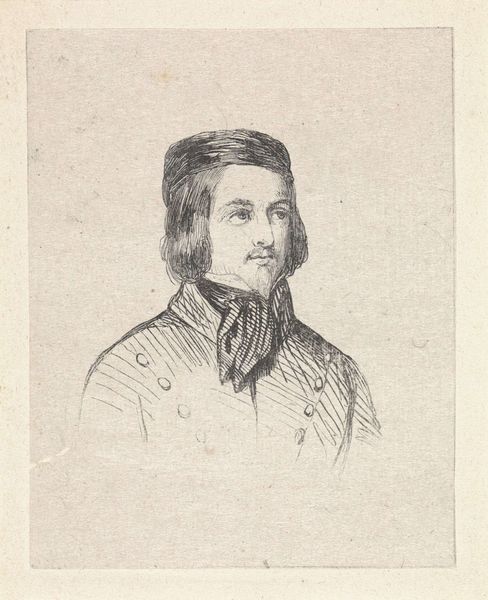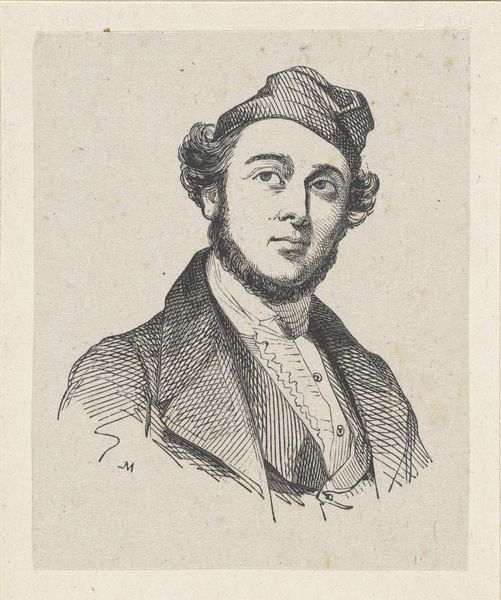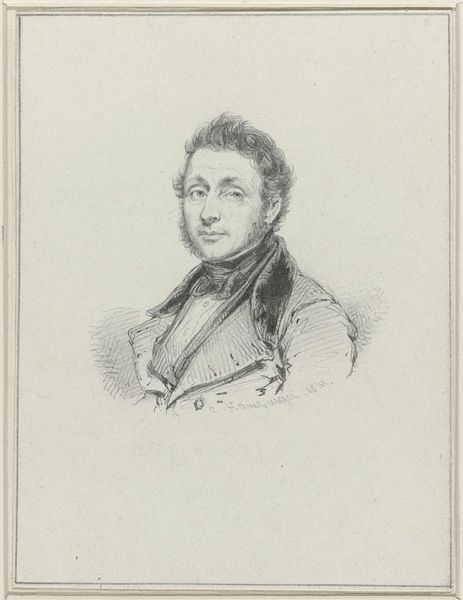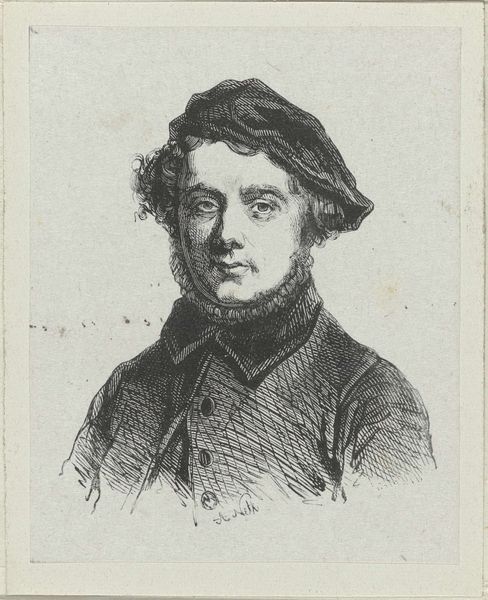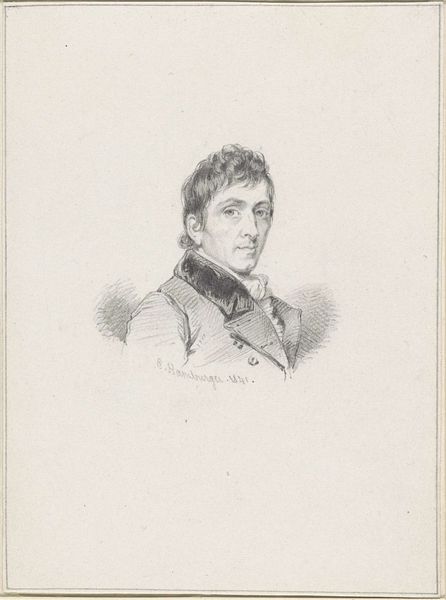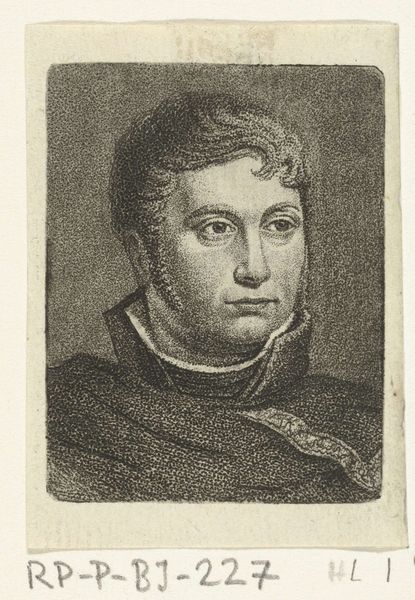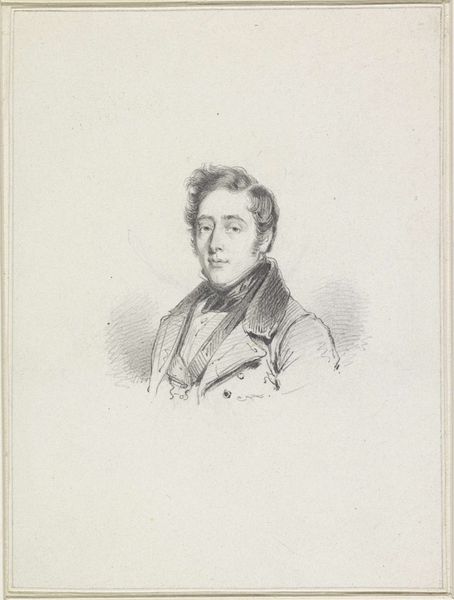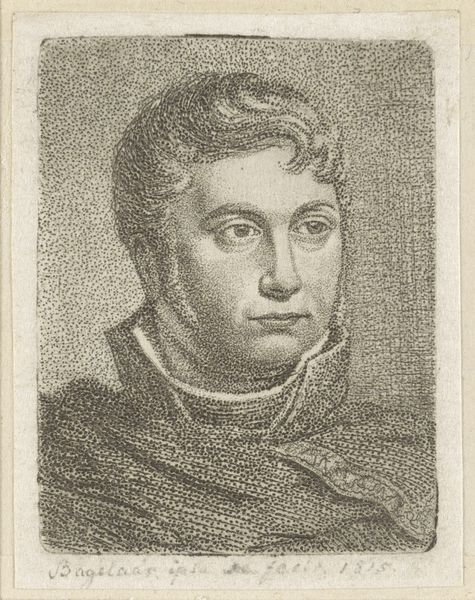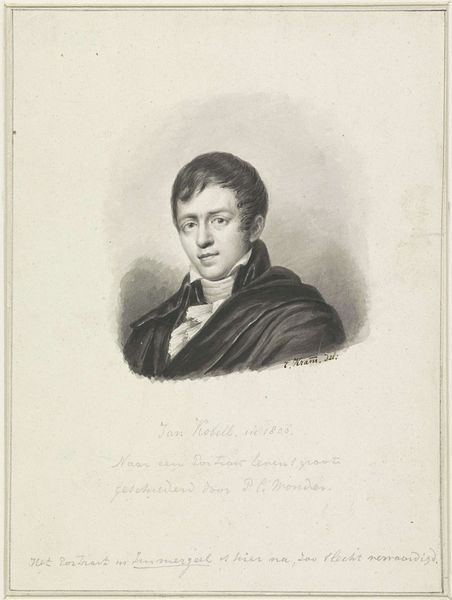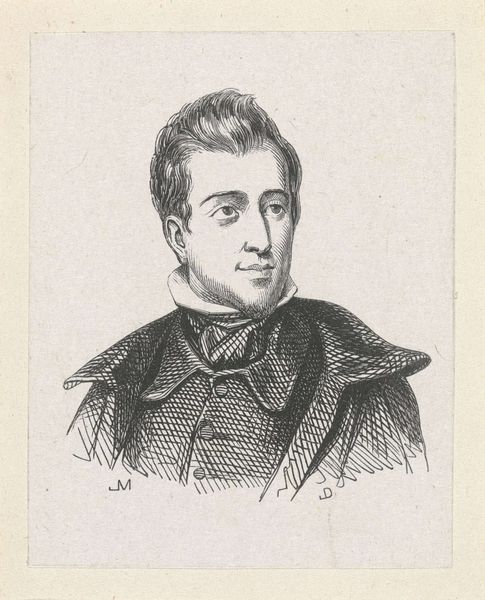
drawing, pen
#
portrait
#
drawing
#
romanticism
#
pen
#
portrait drawing
#
realism
Dimensions: height 50 mm, width 46 mm
Copyright: Rijks Museum: Open Domain
Curator: Here we have a pen drawing titled "Portret van Charles van Beveren." It was created between 1841 and 1842 by a Monogrammist M from Germany. It’s now part of the Rijksmuseum's collection. Editor: It’s striking how modern it feels despite being nearly two centuries old. The use of line is so economical, yet it manages to capture quite a lot about this man's character, or at least an impression of it. I’d say a somber feel emerges. Curator: Yes, and that feeling could relate to the era. Considering its creation during the Romantic period, that perceived somberness fits. Artists were very attuned to emotional expression, particularly through portraiture. How fascinating it is that the use of pen strokes conveys a specific historical and emotional tone. The symbolic value resides not just in explicit imagery, but in artistic method itself. Editor: Precisely! The way the lines seem almost nervous, hurried, lends a sensitivity that may speak to a society grappling with emergent political and industrial realties. How was van Beveren perceived? What narratives were attached to him in society? I wonder if we can see hints here, encoded in the artistic rendering, beyond mere aesthetic choices. Did the cultural anxieties of the time dictate certain visual constraints? Curator: That brings up a fascinating point about social forces shaping art. He definitely occupies a particular role reflected by fashion. Note the detailed rendering of his fur-lined coat; it could reflect bourgeois aspirations. Editor: Yet the choice of a monochrome drawing is also relevant. Was that simply an economic reality of artistic commissions at the time, or were their cultural preferences dictating the kind of public face they hoped to project? Also, did he commission the work or did a loved one? That shifts my reading substantially. Curator: Considering its location within the Rijksmuseum's holdings speaks to its perceived historical and cultural relevance within the national narrative. It acts not only as a record of an individual, but also a relic of specific cultural values. Editor: It's incredible how this detailed portrait encapsulates larger histories about the subject and time, reflecting societal pressures and symbolic gestures tied to class and cultural anxieties. Curator: A beautiful dance of line and cultural memory indeed!
Comments
No comments
Be the first to comment and join the conversation on the ultimate creative platform.
